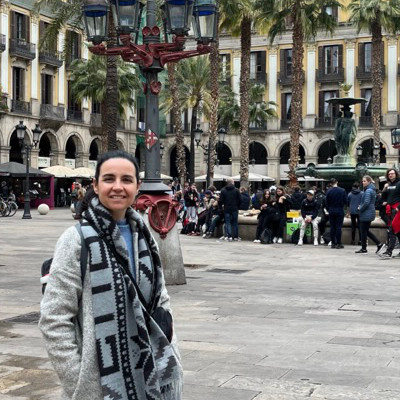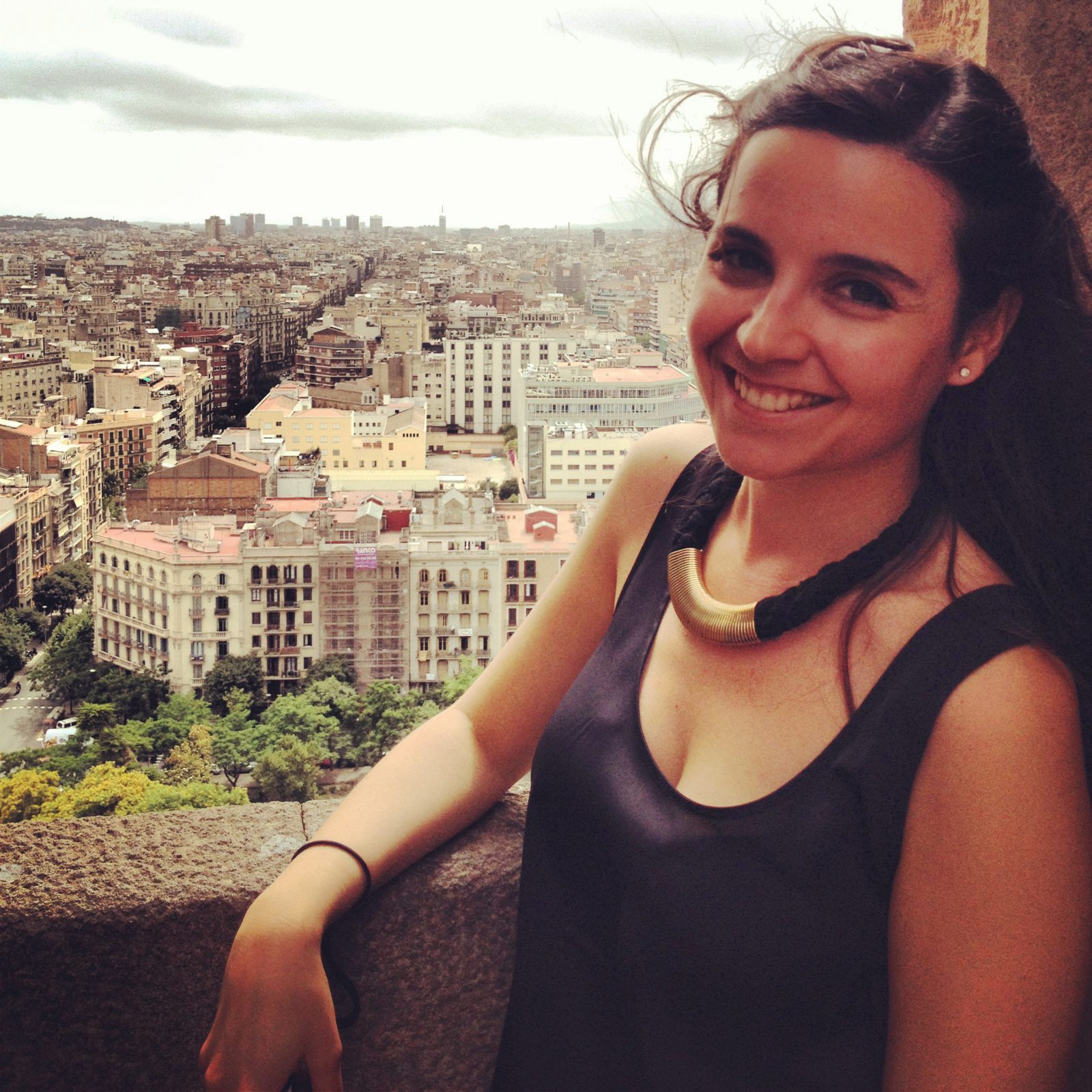As a Catholic country with deeply rooted faith, Barcelona naturally has many churches, basilicas, parishes, and monasteries. There are also other religious centers such as Catholic schools, hospitals, and support and shelter centers.
If you want to discover a piece of religion and history in Barcelona, you can go to one of the following places. A visit to these churches and monasteries in Barcelona is like a journey back in time and a good way to discover beautiful examples of Romanesque, Gothic, and Neoclassical architecture.
Note: Generally, you pay nothing for a visit to the church, except for those that function as museums, such as the Sagrada Família or the Monestir de Pedralbes.
12 Famous Churches in Barcelona
- The Cathedral of Barcelona. Also known as La Seu or the Catedral de la Santa Creu i Santa Eulàlia, is a fantastic example of Catalan Gothic architecture.
- La Sagrada Família. Although this world-famous church, designed by Gaudí, is still under construction, I still recommend everyone to buy tickets and go inside. The symbol of Barcelona is also spectacular inside!
- Santa Maria del Mar. Famous from the book ‘The Cathedral of the Sea‘, the Gothic Santa Maria del Mar is a beautiful basilica located near El Born.
- Esglèsia del Sagrat Cor. This church atop the Tibidabo mountain is perhaps one of the most impressive and offers a fantastic view of the entire city and Collserola from the lookout point.
- Basílica de la Merçè. This Baroque-style basilica is often overlooked, although it is the basilica of the patron saint of Barcelona and close to Las Ramblas.
- Sant Pau del Camp. Sant Pau del Camp, with its beautiful and sober cloister, is a good example of Romanesque architecture. Behind it, you will find the Jardins de Sant Pau del Camp.
- Basílica Santa Maria del Pi. The square Plaça del Pi in the Gothic quarter is dominated by the basilica of Santa Maria del Pi, one of the masterpieces of Catalan Gothic that also has the largest rose window in Catalonia.
- Sant Vicenç de Sarrià. The neoclassical church of Sarrià, built in 1781 by Josep Mas on the Plaça Major de Sarrià, stands on the site where a temple has stood since 987 in honor of Saint Sant Vicenç d’Osca. Its neoclassical bell tower, 43.66 meters high, is its main attraction.
- Sants Just i Pastor. Behind Plaça de Sant Jaume lies one of the oldest churches in Barcelona, Basílica dels Sants Màrtirs Just i Pastor, and the city’s first Christian cemetery.
- Sant Pere de les Puel·les. Built on the remains of an old monastery of the same name, this unique church stands. In front of the church lies Plaça de Sant Pere, with cozy terraces.
- Santa Maria Reina. A dreamy church from the Neo-Renaissance and the location of many weddings in Pedralbes.
- Església de Sant Pacià. In the simple church of Sant Pacià in the Sant Andreu district, you’ll find a hidden mosaic by Gaudí that many people still do not know about.
5 monasteries in Barcelona:
Barcelona once had hundreds of monasteries in and around the city. Over time, and due to the city’s growth, some of these monasteries disappeared. Of the few that still exist, some are open to the public and have been converted into museums. Some gems not to be missed are the monastery of Pedralbes, which contains the world’s largest Gothic cloister, and the monastery of Sant Pau, the only one in Romanesque style.
- Monestir de Pedralbes. This monastery, now turned into a museum, is considered the world’s largest Gothic cloister and is a true oasis of peace. Fun fact, I had a part-time job here as a student.
- Convent de Sant Agustí. This old monastery now functions as a community center and has been partially renovated. In the courtyard, you can still see part of the cloister and because it is usually very quiet here, it’s also a nice place to sit and rest.
- Pati Manning. Within the old poor relief and charity house of El Raval, this courtyard housed a seminary in the Baroque style and now serves as a cultural center. The courtyard is open to the public and has, among other things, an informal bar where students are often found.
- Església de Santa Anna. A hidden gem with a beautiful cloister garden located a stone’s throw from Plaça de Catalunya. Known for the replica of the Black Madonna, the Mare de Déu de Montserrat.
- Església de la Concepció. In the middle of the Eixample district, this popular wedding location has a quiet and beautiful cloister garden.
Other Religious Places in Barcelona
- The Jewish Quarter: In the Middle Ages, Barcelona had a significant Jewish community. Explore the old Jewish quarter of Barcelona during my walking tour or visit the Jewish Museum of Barcelona and the old synagogue.
- Baixada de Santa Eulàlia: The city’s second patron saint has a special altar at Baixada de Santa Eulàlia, one of the places where she was allegedly tortured. A candle always burns by her statue.
- Montserrat: The spiritual heart of the Catalans, known for the Black Madonna and the boys’ choir, is a fun day trip from Barcelona.
- Palau del Bisbe, Casa de l’Ardiaca, and Casa del Degà: Near the Cathedral, there are several important related religious buildings, such as the episcopal palace, the house of the archdeacon, and the house of the dean.
- Cemeteries: Spanish cemeteries are interesting to see, partly because of the impressive mausoleums of rich families and the long rows of niches between tall cypresses. The most interesting cemeteries in Barcelona are in Montjuïc and Poblenou.
- Caelum: Visit the shop and café of Caelum for a true heavenly treat. Handmade cookies and cakes from the Clarissan sisters are sold here.
Religion in Barcelona
During many holidays, such as Easter or Christmas, visiting the local church is customary for many Barcelonans. Many holidays are connected to Christianity, like Three Kings Day and All Saints’ Day. Many Spaniards still practice baptism, first communion, confirmation, and church weddings. We also like to celebrate our name day (the commemoration day of the Catholic saint you’re named after, in my case Santa Marta) and every Spanish village has its own patron saint(s). In Barcelona’s case, this is the Virgin Mercè and, as a secondary patron saint, Santa Eulàlia. However, the number of atheists or people not very concerned with religion is increasing. Therefore, you often see old religious buildings, like monasteries, falling into disrepair or being converted into museums.
Religious Museums in Barcelona
Some museums in Barcelona specialize in religious art or have an important art collection dedicated to the Catholic Church.
- Museu Diocesà: This museum, next to the Cathedral of Barcelona, opened in 1981 and houses an important religious art collection.
- Museu Frederic Marès: Frederic Marès’ private collection includes many religious artworks, including an interesting collection of monumental crucifixes from the Middle Ages.
- Museu Nacional d’Art de Catalunya (MNAC): In the MNAC art museum, there is a large art collection dedicated to religion, particularly Christianity in the Middle Ages. These valuable artworks explain the relationship between the church and the people at the time.
Religious Events in Barcelona
Many events in Barcelona have strong connections to the Catholic Church and the Christian calendar. Big saints are honored on their name day with celebrations, and Christmas, Holy Week, and Easter are celebrated exuberantly. Here are some of the major festivals in Barcelona closely associated with the church:
- Nadal (Christmas): Celebration of the birth of Jesus Christ. Families gather during feast meals, attend church, sing Christmas carols, and decorate their homes with nativity scenes depicting the birth of Jesus.
- Reis Mags (Epiphany or Three Kings’ Day): Commemorates the arrival of the three wise men in Bethlehem, the birthplace of Jesus. Children receive a flood of gifts and special pastries like Tortell de Reis are eaten.
- Tres Tombs (Festival of the Three Circuits): Blessing of animals during a festive parade through the streets of Barcelona, celebrated in honor of Sant Antoni Abat (St. Anthony the Abbot), the patron saint of pets and transport workers.
- Cuaresma (Lent): A fasting period of forty days before Easter. Traditionally, no meat is eaten, only fish and seafood. The “Vella Cuaresma”, an old woman with seven feet, carrying a salted cod in her hand and a basket full of vegetables, visits. Typical festival treats include bunyols de cuaresma (fried dough balls with anise) and torrijas (French toast).
- Setmana Santa (Holy Week): The week before Easter, commemorating the Passion and death of Jesus Christ with passionate street processions, Palm Sunday branches, and tortell de rams (a special pastry for Palm Sunday).
- Pascua (Easter): The resurrection of Jesus Christ is celebrated in Catalonia with a Easter cake, the mona de pascua, often lavishly decorated with chocolate Easter eggs.
- Corpus Christi (Feast of the Body of Christ): This celebration of the institution of the Eucharist in Barcelona is marked with a dancing egg tradition.
- Tots Sants (All Saints’ Day): On this remembrance day for the dead, people visit the graves of loved ones. The celebration is accompanied by the Castanyada, where roasted chestnuts, sweet potatoes, and panellets (small cakes) are eaten.
Tips for Visiting Churches in Barcelona
- When visiting a religious building, appropriate attire is required, so no sleeveless shirts, short skirts, or shorts. This is especially strictly enforced at major attractions like the Cathedral.
- Sunday is considered a day of rest in Spain, and most believers visit the church in the morning. Access to most church buildings in Barcelona is free, except for the Sagrada Família, the Cathedral, and the Basilica of Santa Maria del Mar, where an entrance fee is required. However, you can always enter for free during mass (even at the aforementioned churches). Monasteries converted into museums can only be visited for a fee.
- Masses in Barcelona are usually held in Spanish or Catalan. At some places, such as the Sagrada Família and the Cathedral, you can also attend mass in English. This happens at set times, so be sure to inform yourself well in advance.
- At some church buildings in Barcelona, you are allowed to visit the rooftop terrace (for a fee). It’s an extraordinary experience worth trying! Attractions like the Sagrada Família, the Cathedral, and the Basilica of Santa Maria del Mar also offer special guided tours for visitors.
- The opening hours of church buildings and the times of masses can vary from church to church. Therefore, it is highly advisable to check the opening hours of the church you plan to visit before going.





